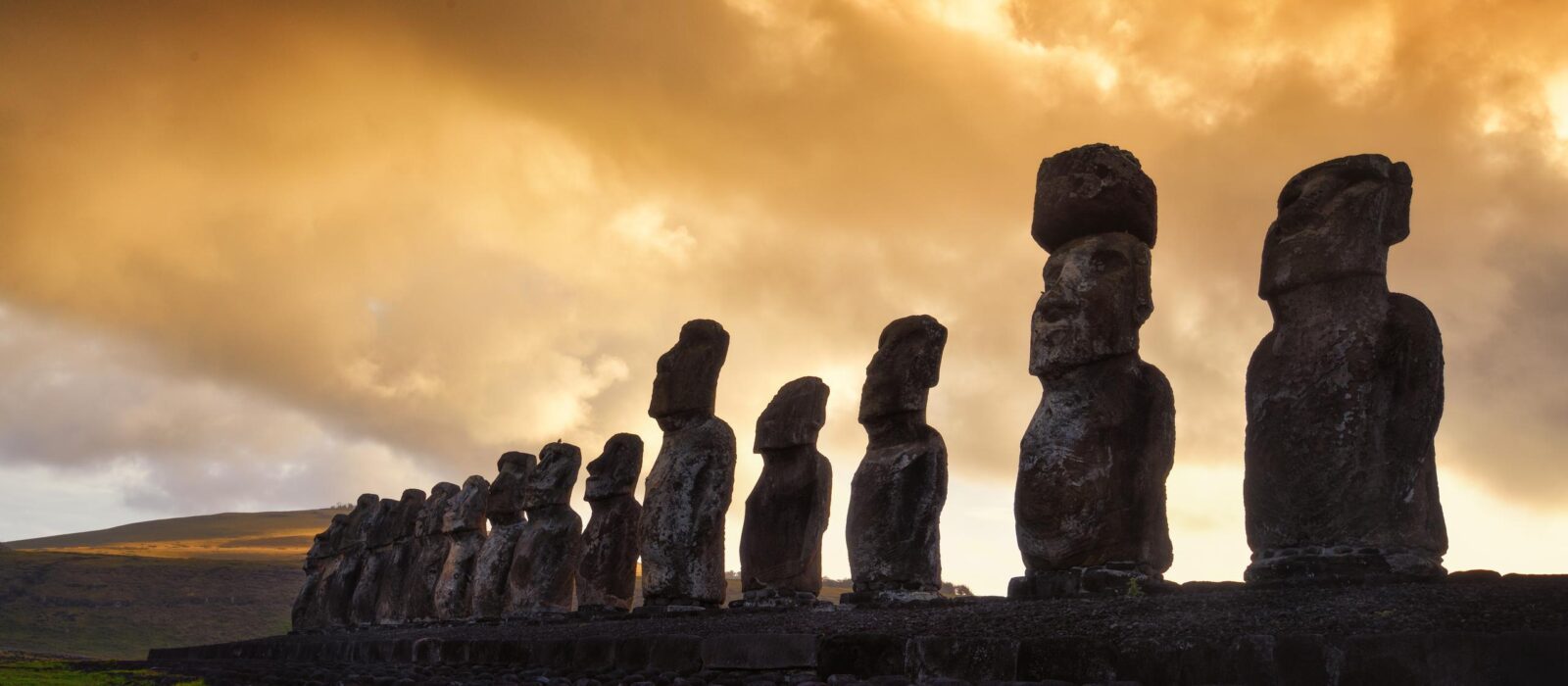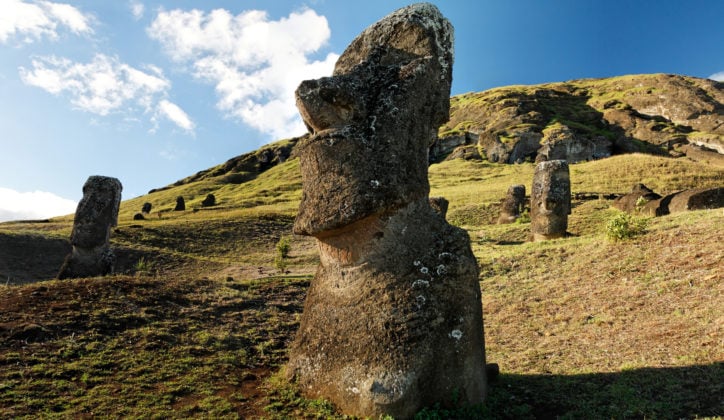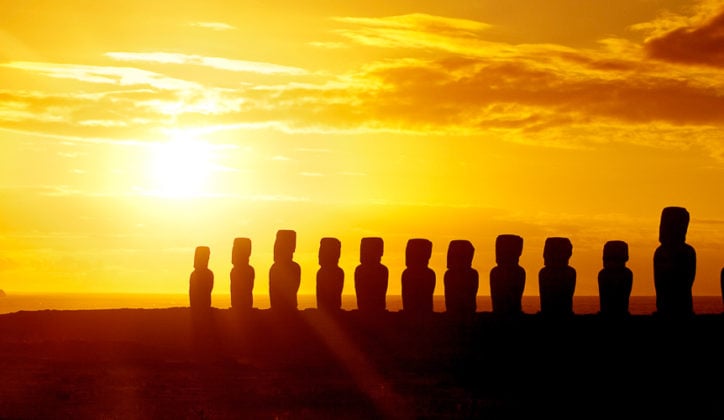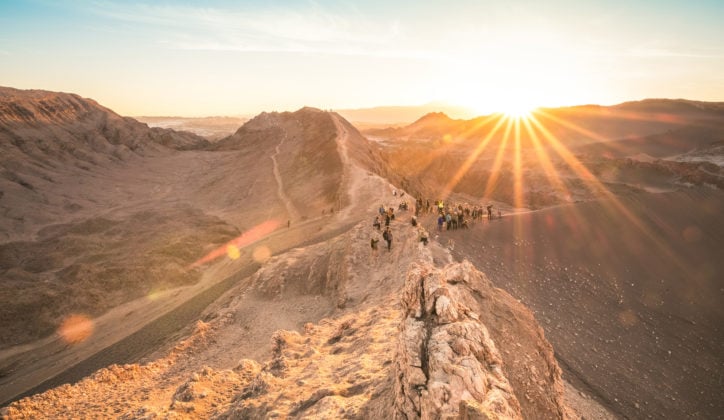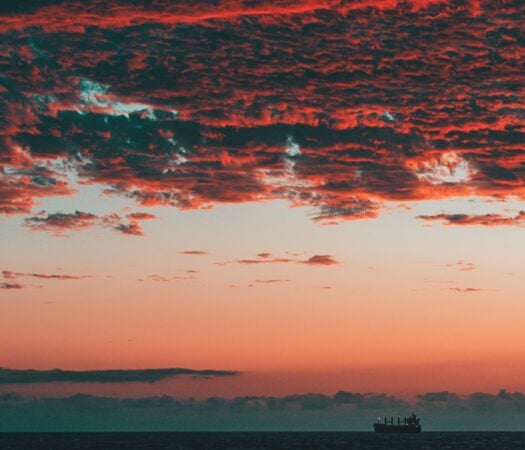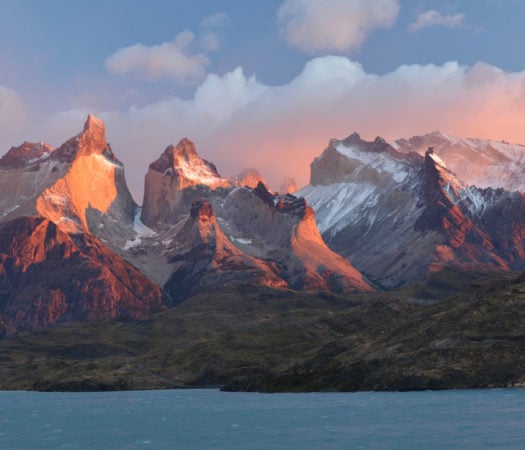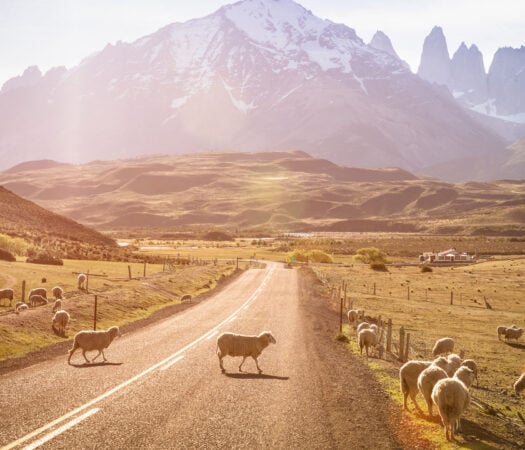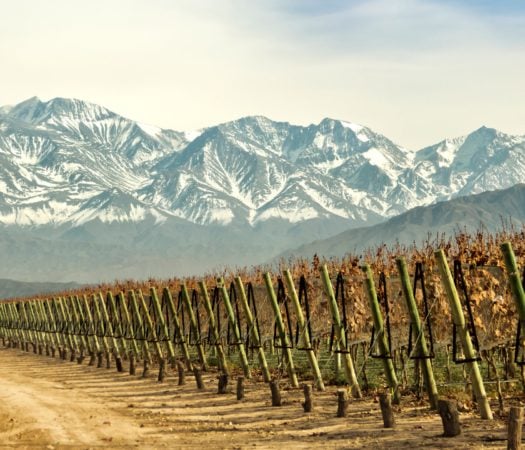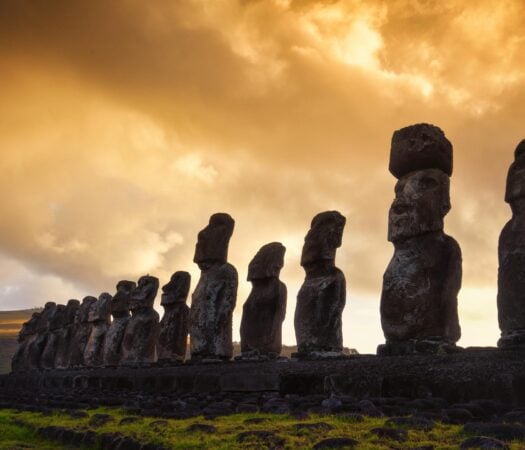Published on: September 29th, 2017
Last modified: May 8th, 2024
Easter Island is among the most remote inhabited places on earth and a dream destination for adventurous travellers. It was christened by Dutch explorers who landed there on Easter Sunday in 1722, although it’s also known by the Polynesian name of Rapa Nui.
Since it’s located about 3,700 km (2,300 mi) off the coast of Chile, travelling to Easter Island requires some advanced planning. Fortunately, we have plenty of experience in arranging bespoke trips to this legendary land. Here’s our ultimate guide to visiting Easter Island.
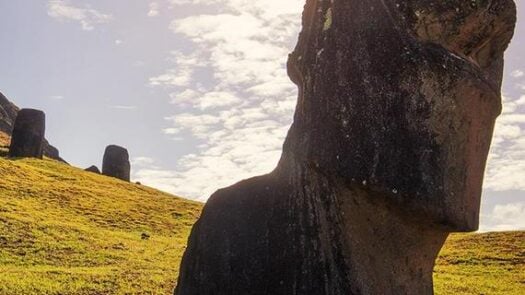
When is the best time to visit Easter Island?
The best time to visit Easter Island is spring (October–December) or autumn (April–June), just outside the high season of January–March. During these months, high temperatures average around 21–24ºC (70–75ºF) and the island is less crowded. The subtropical climate means you can also expect high humidity and some rain, especially in autumn.
Since Easter Island is located in the southern hemisphere, summer starts in January and continues through March. This is the most popular time to travel to Easter Island, with average highs around 26ºC (79ºF) and relatively little rainfall. It’s also the season of the famous Tapati festival, during which islanders compete in events like canoeing, surfing, singing and dancing.
Winter lasts from July to September, with temperatures averaging 15–20ºC (59–68ºF), so this is still a pleasant time to visit Easter Island. The rainiest months are usually April and May, but showers are also likely during winter. If you want to enjoy Easter Island’s beaches and sunny skies, consider planning your trip for the spring shoulder season instead.
How to get to Easter Island
The best way to get to Easter Island is by plane. The flight from Santiago, Chile is about five and a half hours long, and the return flight lasts around four and a half hours (thanks to the winds). The only airline that makes the trip is LATAM.
Although Easter Island is part of Chile, you’ll still need your passport for the journey. Once there, the currency (Chilean pesos) and primary language (Spanish) are the same as on the mainland. It’s advisable to bring pesos with you, as exchanging money isn’t as easy on the island.
How long should I spend on Easter Island?
We suggest spending 3–4 nights on Easter Island in order to fully enjoy it. Because the flight is quite long, we don’t generally recommend shorter trips. If you want to stay longer, rest assured that you won’t get bored; from the famous megalithic moai to volcanoes and white sand beaches, there’s plenty to see and do.
Where to stay on Easter Island
Of all our Easter Island travel tips, this one is the simplest. We suggest staying at Explora Rapa Nui, a luxurious hotel outside of Hanga Roa. Each of its 30 rooms has spectacular sea views, and a wide range of activities and excursions are available. Make sure to try the hotel’s restaurant, which highlights locally sourced ingredients.
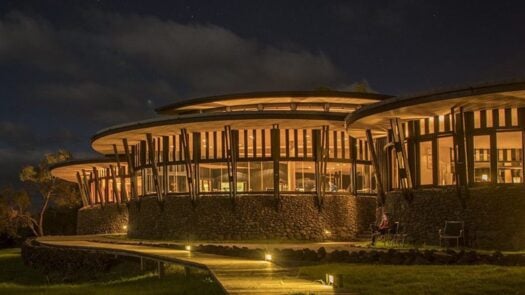
Our to 8 reasons to visit Easter Island
In many respects, the alluring island of Rapa Nui is one of the best places on the planet to experience the joy of exploring new sites and places – there’s nowhere else quite like it. Perhaps due to this isolation, Rapa Nui has been able to retain many aspects of a culture, established by its first inhabitants around the year 300.
To help inspire you when you’re planning your adventure we’ve asked expert travel designers to list their favourite reasons to visit Easter Island. Here’s just a taste of the sorts of things you’ll be able to experience on bespoke, luxurious and thoroughly interesting excursions.
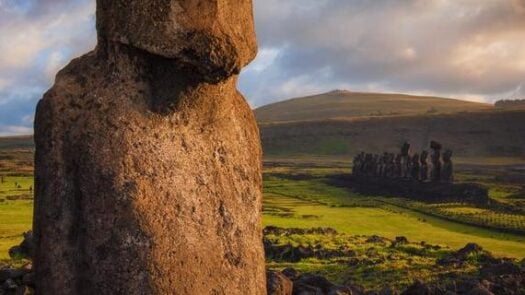
1. Iconic Moai stone statues
Easter Island is most famous for its mysterious monolithic stone statues. Known as moai, these statues are believed to have been carved by the Rapa Nui people sometime between 1250 and 1500, depicting the faces of their ancestors.
Around half of the Moai are at the Rapa Raraku site but many that were originally there, have been moved to other spots along the coastline and positioned facing inland. Guided tours take visitors around the island to see the ancient statues up-close.
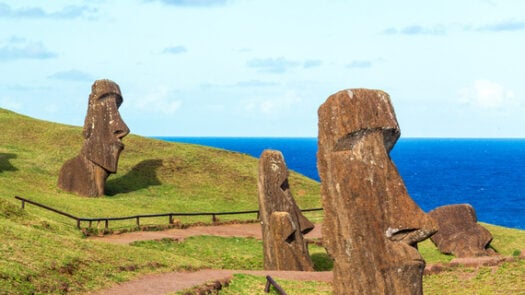
2. A UNESCO protected National Park
Alongside its extraordinary cultural heritage, Easter Island has a great wealth of natural riches with extinct volcanoes, lava tunnels and caves that were formed by volcanic eruption, and a rugged coastline of cliffs and hidden bays.
For this reason a large proportion of the island has been designated as the Rapa Nui National Park, a protected UNESCO World Heritage Site. In fact, of the island’s 16,628 hectares (7,000 hectares) are protected within the national park’s borders.
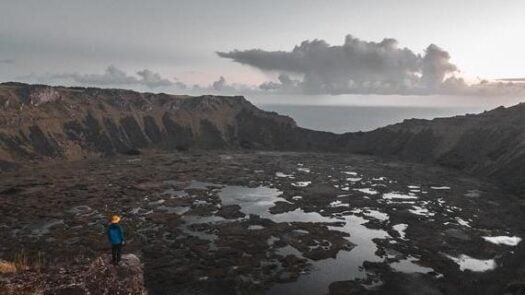
3) Incredible hiking
A number of guided hikes lead visitors around the island to see archaeological sites amidst scenic landscape. In around seven hours, trek along the dramatic northern coast – an area that’s only accessible on foot – from the western edge of the extinct volcano Maunga Terevaka to Anakena beach, with Moai, caves and rock carvings to see along the way.
For a shorter three-hour hike, follow the route around the eastern rim of Rano Kau crater to Vai Atare where there’s a view of the islets off Easter Island’s coast. In around five hours, explore the remote eastern peninsula to see the island’s oldest volcano Poike, as well as Moai and the cave of Ana O Keke, or hike to the island’s highest point, Terevaka, that lies at 507 metres.
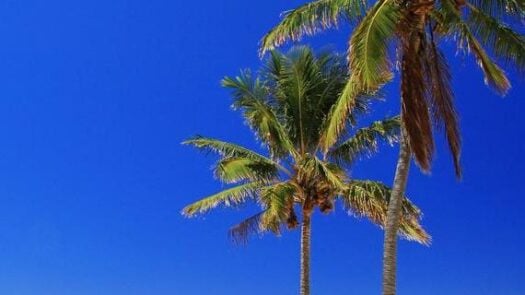
4. Idyllic remote beaches
Anakena on the northern coast is the island’s most popular beach – particularly during the southern hemisphere’s summer months – where white coral sand is lapped by the warm Pacific Ocean with coconut trees swaying in the sea breeze.
The beach is home to two archaeological sites: Ahu Ature Huki stone platform with its one remaining Moai, and the Ahu Nau Nau stone platform, which has seven Moai still standing. Smaller beaches are dotted along the coastline, including Pea Beach in Hanga Roa.
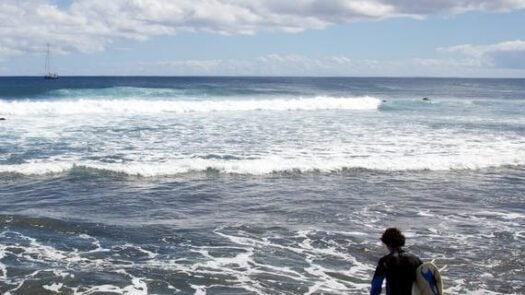
5. The big swell of the South Pacific
Due to its location in the South Pacific, Easter Island has world class surfing conditions with lava reef breaks and all-year-round swell.
Surf lessons can be arranged in Hanga Roa with waves that are suitable for beginners, while experienced surfers head to Tahai on the northwest coast and the beach of Mataveri in the southwest.
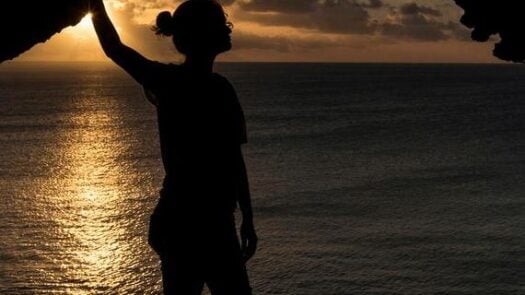
6. Labyrinths of lava cave networks
The most impressive caves on the island are those of the Te Pahu network. Situated below the Akivi Ahu archaeological site, the cave network was formed when a tunnel of lave solidified after Mumga Hiva Hiva erupted around 10,000 years ago. The caves can be accessed by climbing down through the collapsed ceiling and are easily navigated with a numbers of openings for the sunlight to pour in.
Elsewhere on the island, the smaller caves of Ana Kai Tangata offer historic insight with ancient paintings of birdmen, while the Te Peu caves and lava tubes are characterised by their rock carvings and lava stalactites.
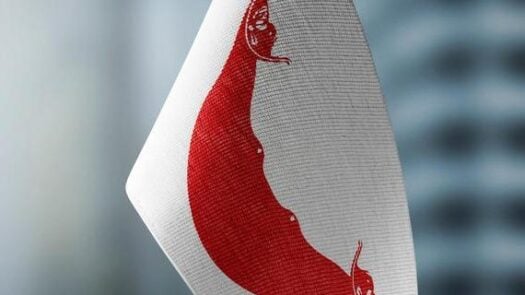
7. Celebratory cultural festivals
One of the most famous festivals on Easter Island, literally meaning ‘the week’, is Tapati festival. The festival is celebrated in Rapa Nui culture with two teams from different areas of Hanga Roa competing by sliding downhill on banana trunks, spear-fishing, surfing and canoeing, as well as singing and dancing contests. Finally, the Queen of Tapati will be crowned.
Events are held islandwide and involve all of the islanders while welcoming visitors to experience the occasion too. The festival takes place from the end of January to the beginning of February each year.
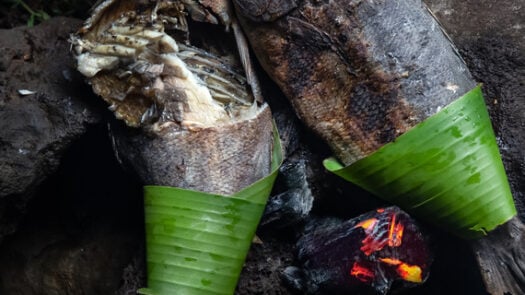
8. Delicious authentic Rapa Nui cuisine
Rapa Nui fare utilises the island’s abundance of seafood and fish, with lobster, shrimp, tuna and mahi mahi among those on offer, along with fresh produce such as sweet potato, yam and sugarcane that was originally brought over from the Marquesas Islands.
Ceviche and tuna empanadas are both island staples, but the most traditional dish is Uma Rapa Nui in which meat, fish and vegetables are wrapped in plantain leaves, then cooked on hot stones in the earth.
Trip Inspiration
Whatever you want from your trip to Easter Island, our travel designers are ready to help

